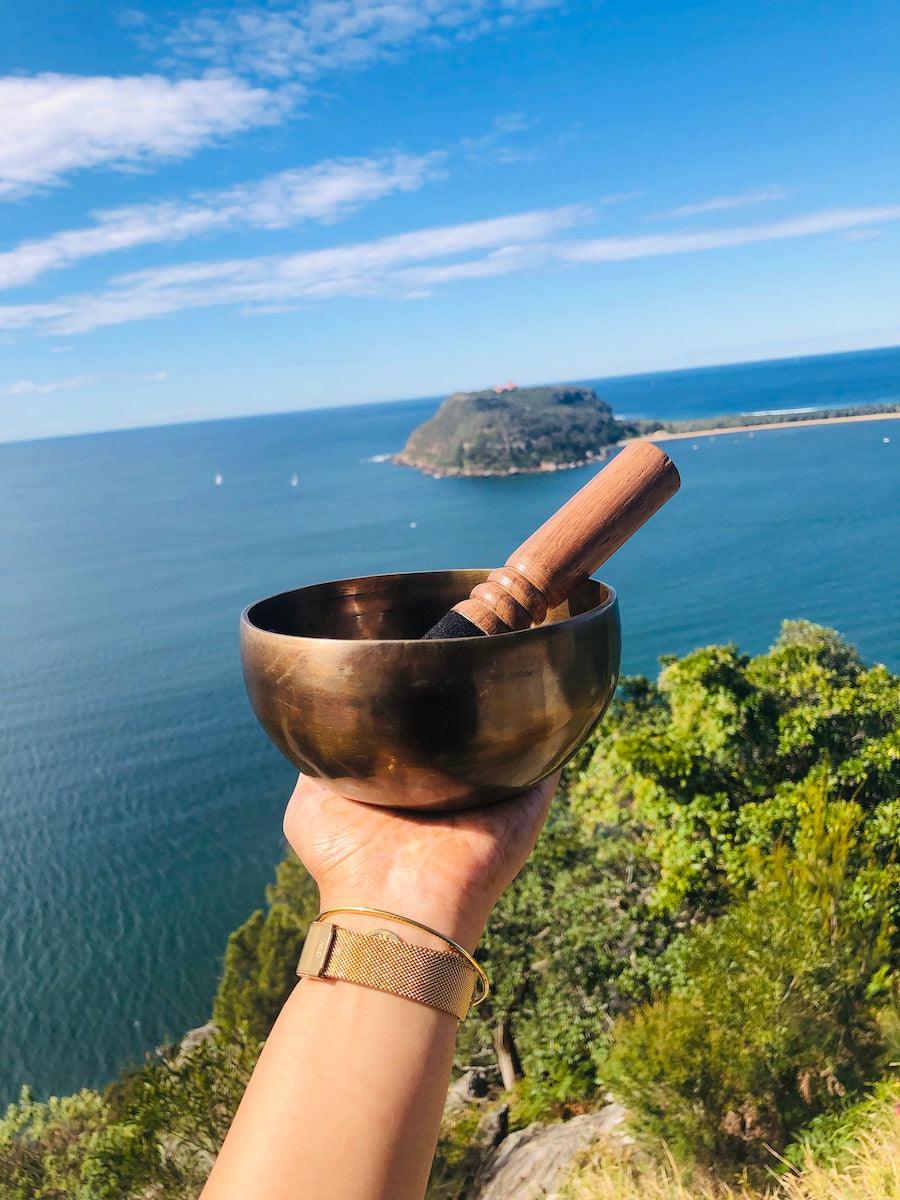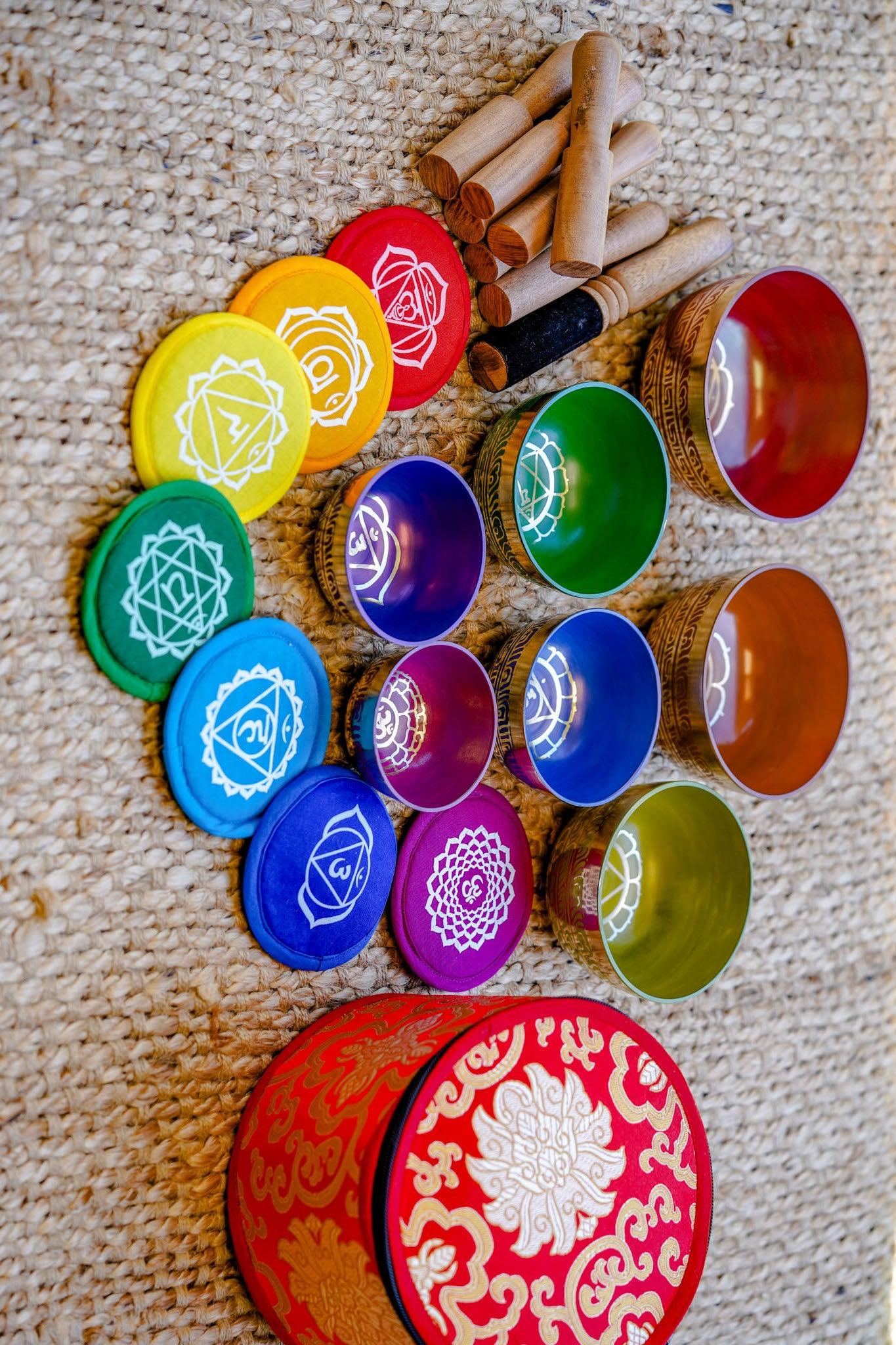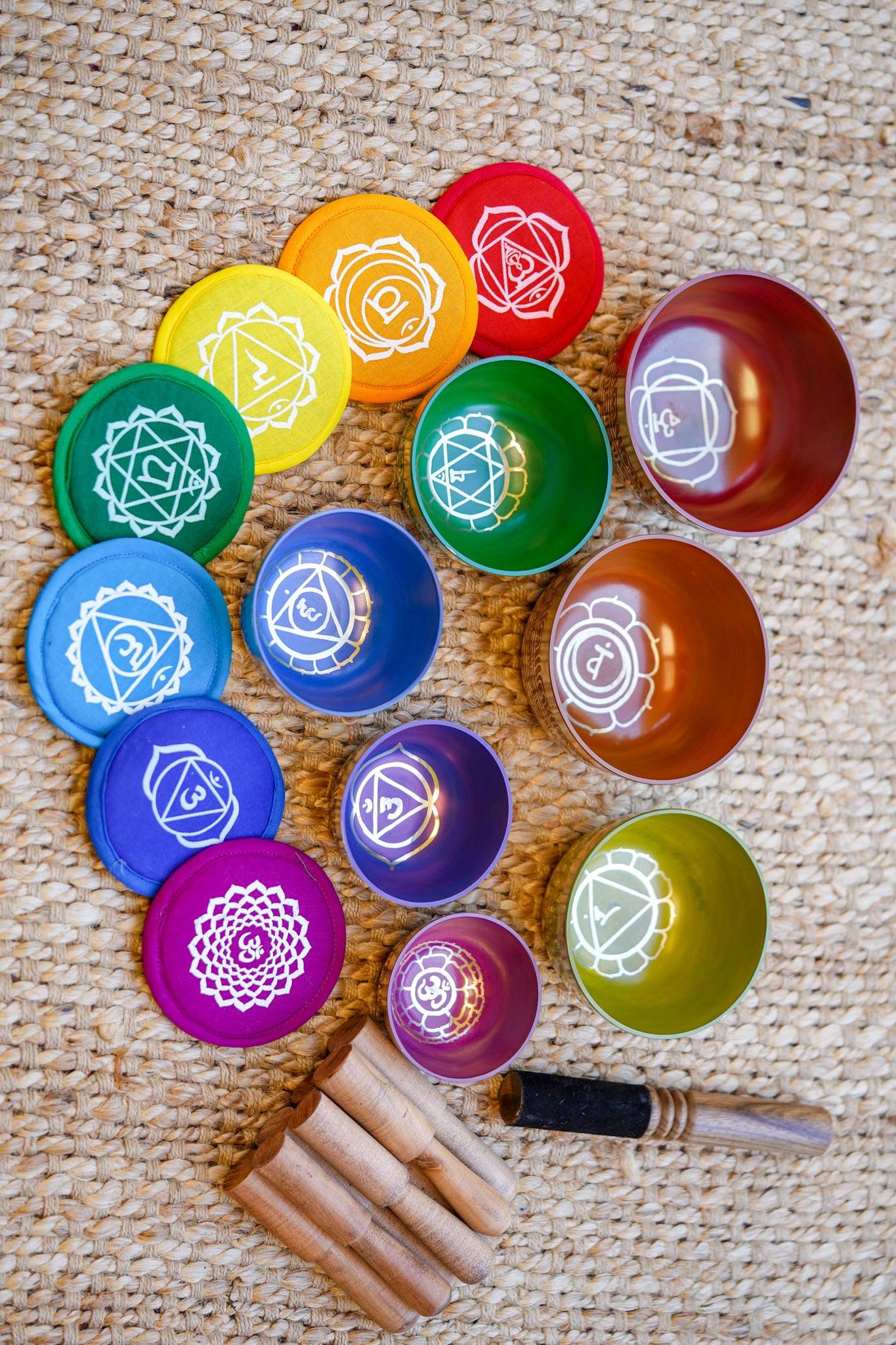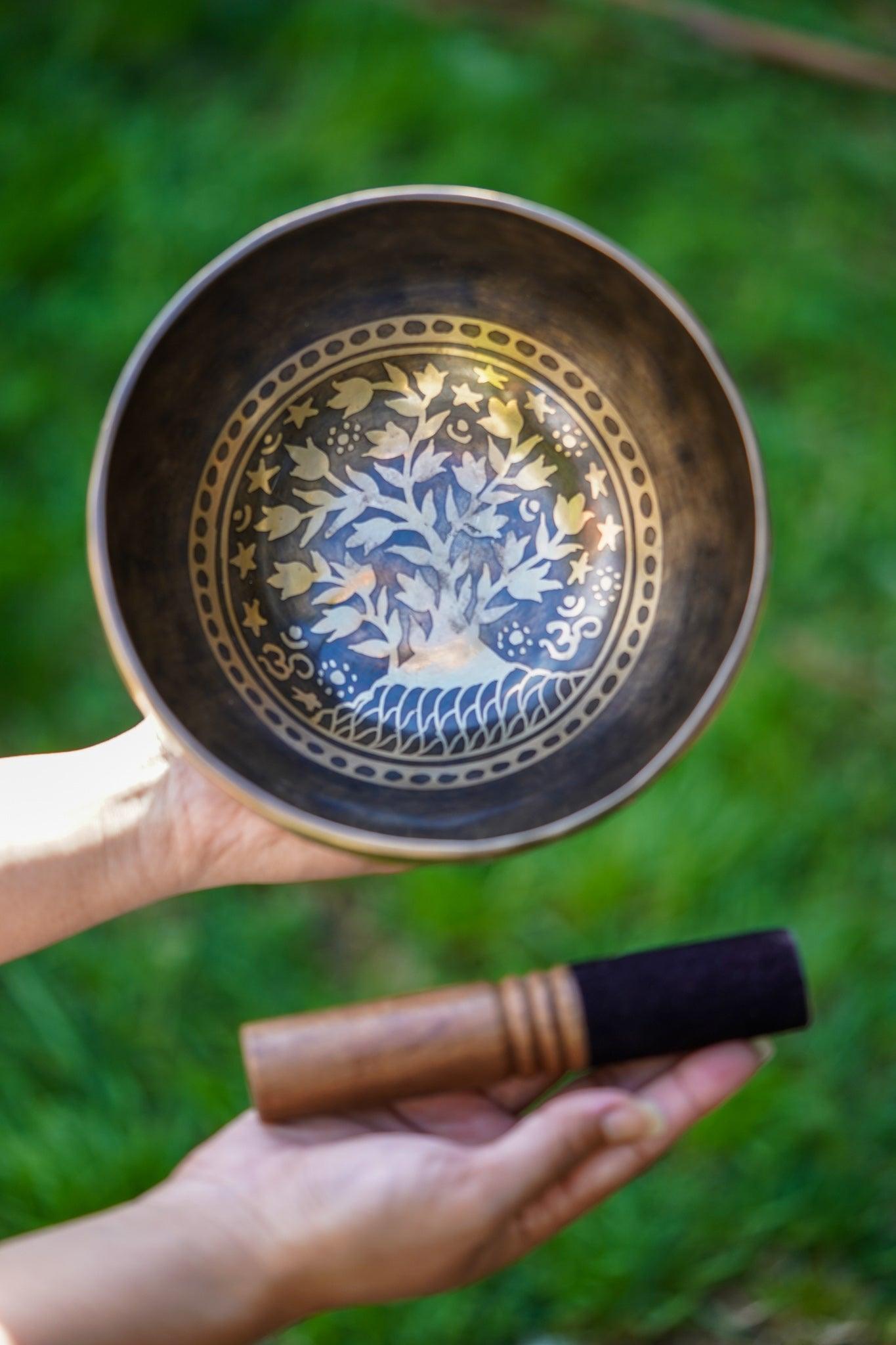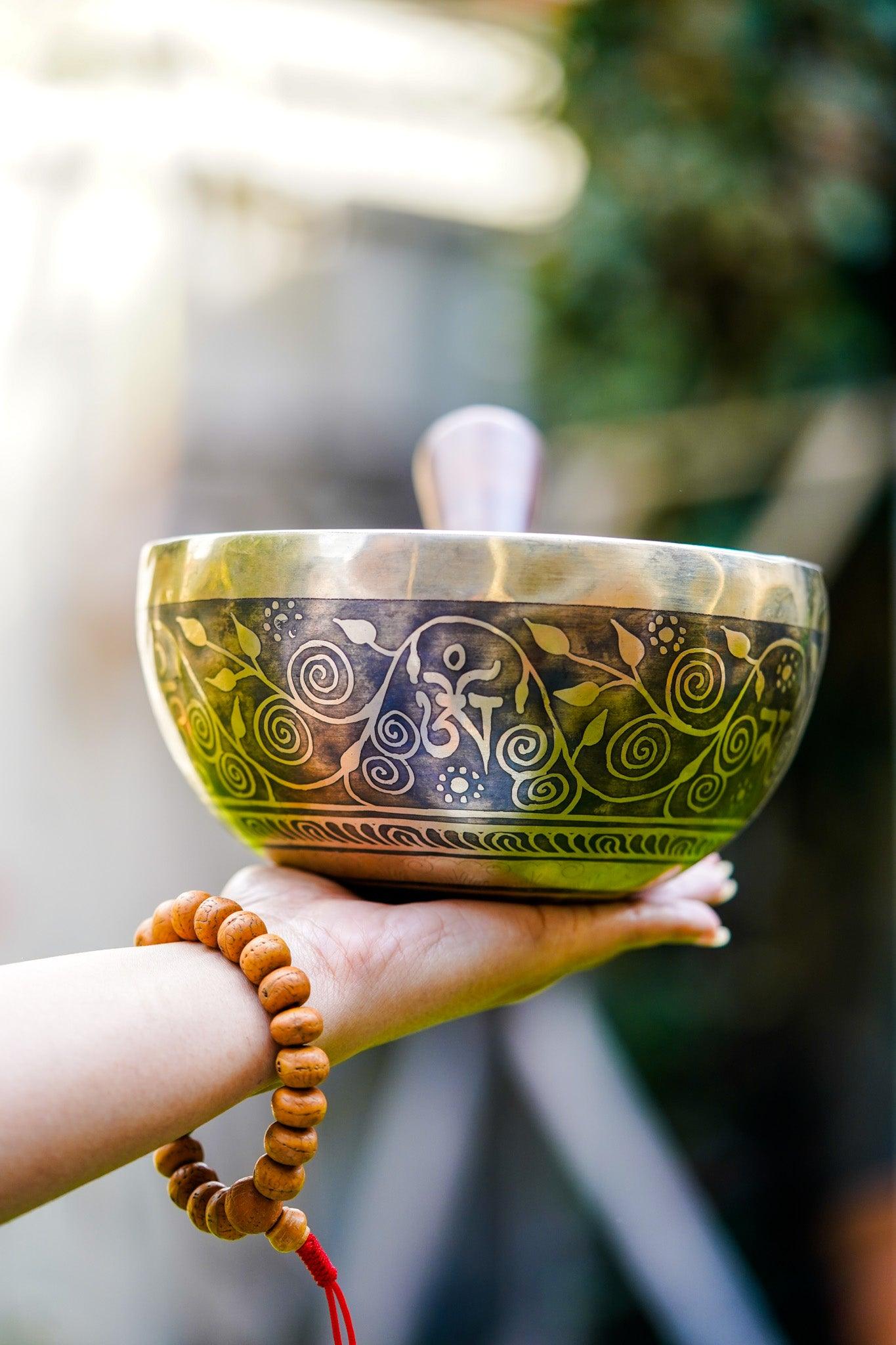Singing Bowl Origin
An origin story From beginning of human civilisation, music and sound have been used as tools to promote relaxation, healing and meditation. One of the first few instruments created to be used for this purpose are called singing bowls. Singing Bowls is a nearly symmetric metal bowl that produces a musical sound either by rotating a wooden stick around the outside rim or softly hitting the wooden stick on the outer rim. The wooden stick is called “Puja” in Nepali and mallet in English, these wooden sticks are covered with felt or leather.
Singing bowls are commonly known as Tibetan Singing Bowl, Tibetan healing bowl, Tibetan Meditation bowl and Himalayas Singing bowl. Due to its name many people believe singing bowls are originated from Tibet but in reality, it has originated from Nepal and Eastern India.
Traditionally singing bowls are made of several metals, including: tin, mercury, copper, gold, silver, lead, and iron. If we try to track back the origin of singing bowl it has a mysterious past and not much is known about their origins. Few researchers believe singing bowls were first made in Mesopotamia over 5,000 years ago. As such, singing bowls are believed to be one of the most ancient artisan crafts in human history. Although folklore about the artisans behind singing bowls existed in the later centuries, knowledge of that folk lore unfortunately died along with the singing bowls’ succeeding owners.The very first singing bowls were said to be made of pure copper and produced for both medicinal and musical purposes. They were produced primarily inside the homes of the artisans. Knowledge about the metal work was passed on from generation to generation, although eventually this knowledge chain was broken. Sometime later, singing bowls began to be made of brass, which is a combination of various earth metals, including copper. Some anecdotal references say that 2,000-year old brass singing bowls appeared in an Indian and Northern Nepal region at the dawn of the last century. History of Nepali metallurgy dates back to more than seven hundred years. Nepali metal artisans became few of the world’s best craft men in metals and alloy. The metal statue, singing bowl found in Himalayan region of Nepal dates back to more than six hundred years prove that few places singing bowl have originated lies in Nepal. Bronze bells from Asia have been discovered as early as the 8th–10th century BC and singing bowls are thought to go back in the Himalayas to the 10th-12th centuryAD (Feinstein, 2011). Today, singing bowls’ mystical sounds can now be heard in many different places such as healing centres, yoga studios, classrooms, temples, and much more.
But one thing remains – singing bowls are still as powerful of a spiritual, medicinal and musical tool as they were thousands of years ago. Singing bowls are used for both religious and spiritual setting, it has been scientifically proven that it increases the concentration power while meditation and relaxation. Know more about an ancient healing through brainwave entraining.


